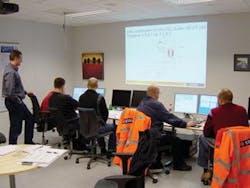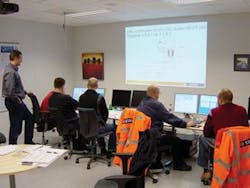Simulator aids Snøhvit process analysis
Adynamic simulation model developed by Fantoft Process Technologies can be used to monitor and optimize production and process operations. One of the latest applications is Statoil’s Snøhvit project.
The model incorporates Fantoft’s D-Spice program, which is fully integrated with the OLGA multiphase pipeline model. It can be applied in various ways, and at all phases of a project, from early design throughout the life of the field, according to senior simulation engineer Øystein Engen.
For example, it can be applied to evaluate different design options, to help the user to determine the optimum outcome. During the operations phase, different production scenarios can be compared as a means of selecting the most favorable long-term production strategy. The model can be run in real time to provide a check that operations are proceeding within expected parameters or speeded up to 50 times real time to throw light on future trends by identifying transients in the system.
To ensure the model represents a real production scenario as closely as possible, it should ideally be supplied with real field (as opposed to simulated) data, Engen says. In the case of an LNG plant like Snøhvit, this might mean parameters for compressors, heat exchangers, and valves such as compressor maps, heat transfer coefficients, valve sizes, and valve opening/closing characteristics.
Users can also input manufacturers’ process and instrumentation diagrams to enable modeling of logic and instrumentation. The Fantoft model can reproduce the high degree of detail of such diagrams.
The company’s involvement in Snøhvit began in 2001 when it performed a study of the pipeline inlet facilities at the LNG plant to check the control system and verify the design. Statoil saw the benefits of the simulation system, and in 2003 contracted Fantoft to construct a complete model embracing both the plant and the subsea production facilities.
Other offshore applications of the dynamic simulator include Hydro’s Oseberg and Heimdal, Shell’s Goldeneye and NaKika, Total’s Rosa and Canyon Express, BP’s Thunder Horse and Atlantis, ConocoPhillips’ Magnolia, ChevronTexaco’s Tahiti and BG’s Atlantic/Cromarty. Shell reported that use of the system helped raise operational uptime on NaKika from 84% planned to 96% achieved during the first six months of operation.
Offline, the simulator also serves as a training tool. Statoil is currently using it to train 80 future operations personnel on Snøhvit.•

